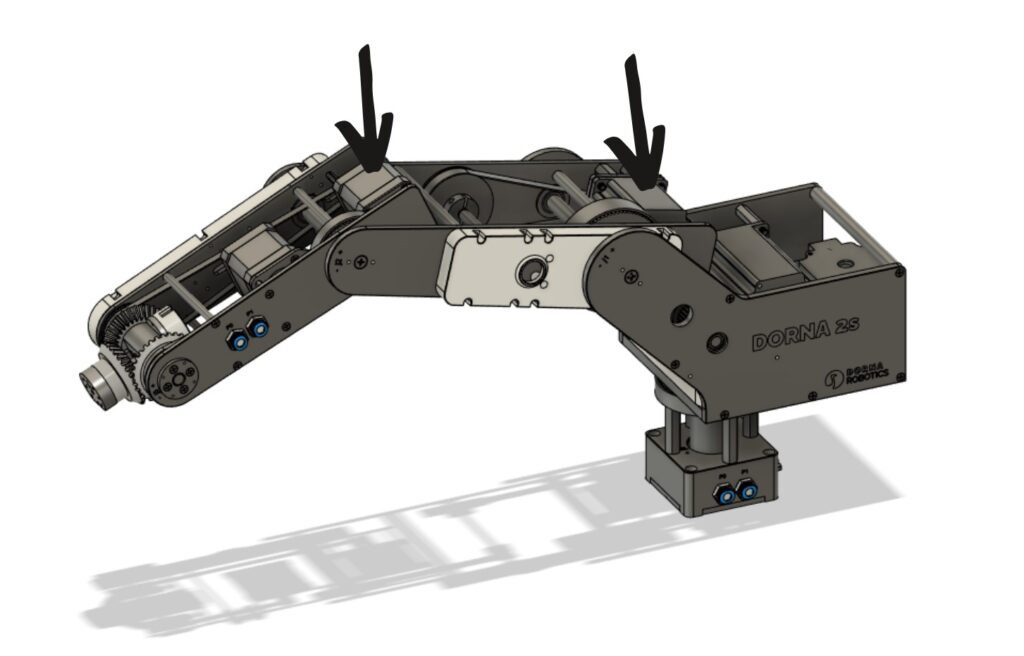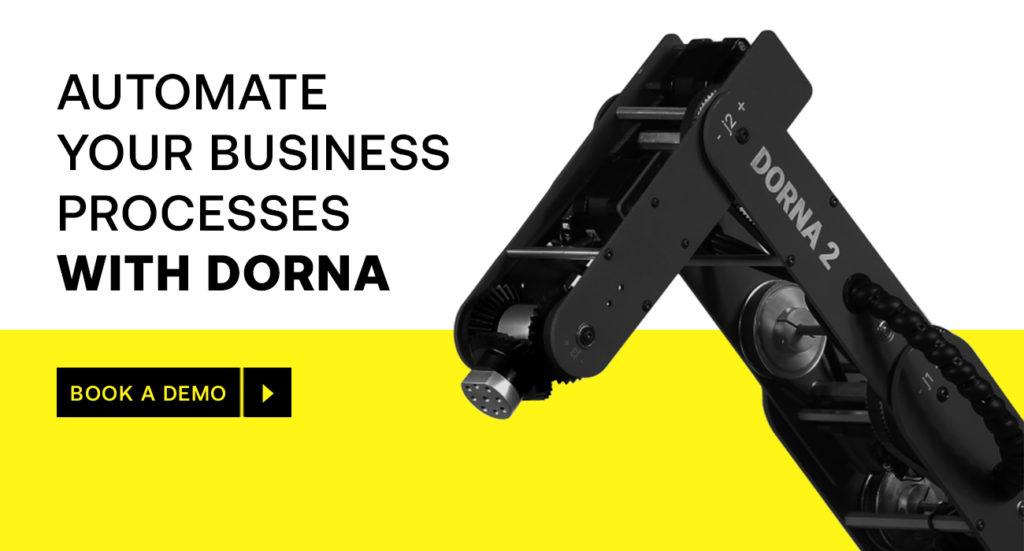Blogs
Elevate Your Laboratory By Automating These Tasks
It is well known that automation is not just a tool; it's a conductor, directing the laboratory processes at multiple…
15 minute read
In This Article
In the ever-evolving landscape of robotics, where innovation meets precision, the significance of robot joints cannot be overstated. These mechanical marvels act as the fundamental connectors in robotic systems, enabling movement, articulation, and functionality similar to human motion.
From the graceful sweep of a jointed arm robot to the skilful navigation of a cylindrical robot, understanding the diverse types, functions, and applications of robot joints is essential.
This blog explores joints, as we unravel the robot anatomy and explore their capabilities.
Robot joints are the movable connections between different parts of a robot’s body, much like the joints in humans. These links enable robots to bend, twist, and move in various directions, allowing them to perform tasks and interact with their environment. Robot joints come in many forms, including rotational joints like those in arms and legs, as well as sliding joints found in robotic grippers and other tools. These joints are typically equipped with actuators, sensors, and mechanical components to facilitate controlled movement and precise positioning. Overall, robot joints are essential for the mobility and functionality of robots in a wide range of applications, from manufacturing and assembly to exploration and healthcare.

A robot joint is a type of joint that twists and moves like a human.
There are mechanical and electrical components that work together to make this happen. By integrating these, robot joints can achieve a high level of flexibility, accuracy, and efficiency in performing a wide range of tasks.
This combination of components enables robots to mimic the complex movements of human limbs and carry out various applications effectively in industries such as manufacturing, healthcare, and exploration.
Bearings play a vital role in reducing friction and enabling smooth movement within the joint. They support the rotation or linear motion of parts within the joint. Common types of bearings used in robot joints include ball bearings, roller bearings, and plain bearings. These bearings are often made of durable materials like steel or ceramic and are designed to withstand high loads and speeds while minimizing frictional losses.
Linkages are mechanical assemblies of rods, bars, and joints that transmit motion and force between different parts of the robot joint. They can be simple, like a single hinge joint, or more complex, like a multi-bar linkage mechanism. Linkages allow for controlled movement and amplify or reduce the force applied to the joint. By carefully designing the geometry and arrangement of linkages, engineers can achieve specific motion profiles and mechanical advantages tailored to the requirements of the robot’s task.
Gears are toothed mechanical components that transmit motion and power between rotating shafts within the joint. They can change the speed, torque, or direction of rotation, depending on their configuration. Common types of gears used in robot joints include spur gears, helical gears, bevel gears, and planetary gears. Gears are essential for converting the rotational motion of actuators into the desired movement of the joint. They also provide mechanical advantage and control over the joint’s motion, allowing for precise positioning and manipulation.
Electric motors are the powerhouse behind robot joints, converting electrical energy into mechanical motion. These motors come in various types, including DC motors, stepper motors, and servo motors.
DC motors provide continuous rotation and are commonly used in applications where speed control is essential. Stepper motors offer precise control over position and are often used in robotic systems requiring accurate positioning. Servo motors combine the features of both DC and stepper motors, offering precise control over both speed and position. The choice of the robot arm joint motor depends on factors such as the required torque, speed, and precision of movement needed for the specific application of the robot joint.
Sensors play a crucial role in providing feedback to the robot’s control system, enabling it to monitor and adjust the joint’s position, velocity, and force accurately. Encoders are commonly used to measure the rotational position of the joint, providing precise feedback for controlling movement.
Potentiometers measure the angle of rotation, while load cells gauge the force exerted by the joint. Additionally, proximity sensors detect the presence of objects in the joint’s vicinity, enhancing safety and preventing collisions. By integrating various types of sensors, robot joints can operate with precision and respond dynamically to changes in their environment, ensuring efficient and safe operation.
The control system acts as the central nervous system of the robot joint, orchestrating the interaction between sensors, actuators, and other components. It processes the feedback from sensors to determine the joint’s current state and calculates the required commands to achieve the desired movement.
Proportional-integral-derivative (PID) controllers are commonly used algorithms to regulate the joint’s position, velocity, and force accurately. Advanced control techniques, such as fuzzy logic and neural networks, can enhance the adaptability and robustness of the control system, enabling the robot joint to perform complex tasks in diverse environments. Through precise coordination and feedback mechanisms, the control system ensures that the robot joint operates smoothly, efficiently, and safely, meeting the demands of various applications.

In the dynamic realm of robotics, choosing the appropriate joint type holds the utmost importance in achieving desired functionalities and optimizing performance across various applications. Robot joints come in diverse forms, each with distinct characteristics, applications, and advantages. Let’s delve into the categorization of robot joints and explore their significance:
Characteristics: Revolute joints, also known as rotary joints, facilitate rotation around a single axis. They offer versatility in movement and are pivotal in enabling bending and twisting motions.
Applications: Revolute joints find extensive use in robotic arms and legs, where they enable articulation and maneuverability essential for tasks such as assembly, welding, and material handling in manufacturing processes.
Advantages: The versatility of revolute joints allows for a wide range of motion, making them suitable for applications requiring flexibility and adaptability in movement.
Characteristics: Prismatic joints, also referred to as linear joints, enable movement along a single axis in a straight line. They excel in providing precise linear motion.
Applications: Prismatic joints are commonly employed in robotic sliders, extendable arms, and telescopic mechanisms, where precise linear movement is crucial for tasks such as pick-and-place operations and positioning.
Advantages: Prismatic joints offer precise control over linear motion, making them ideal for applications requiring accurate positioning and alignment.
Characteristics: Spherical joints, also known as ball-and-socket joints, allow movement in multiple directions around a central point. They offer a high degree of flexibility in motion.
Applications: Spherical joints are commonly utilized in robotic wrists and hips, where omnidirectional movement is essential for tasks such as object manipulation, grasping, and navigation in complex environments.
Advantages: The flexibility provided by spherical joints enables robots to navigate and interact with their surroundings more effectively, making them suitable for applications requiring agility and adaptability.
Characteristics: Universal joints, also called cardan joints, facilitate rotation around two non-intersecting axes. They offer flexibility in changing the orientation of connected parts.
Applications: Universal joints are often employed in robotic manipulators and drive shafts to transmit motion between misaligned components, allowing for smooth and efficient operation in various industrial applications.
Advantages: The ability of universal joints to accommodate misalignment enhances the maneuverability and efficiency of robotic systems, particularly in tasks requiring complex motion trajectories.
Characteristics: Cylindrical joints combine rotational and linear motion along a single axis, comprising a revolute joint coupled with a prismatic joint.
Applications: Cylindrical joints are commonly found in cylindrical robot arms and grippers, where tasks necessitate both rotational and linear movement, such as material handling, machining, and assembly operations.
Advantages: The integration of rotational and linear motion in cylindrical joints offers versatility in performing tasks that require a combination of both types of movement, enhancing the efficiency and functionality of robotic systems.
Characteristics: Planar joints enable movement within a single plane defined by two perpendicular axes, restricting motion to two-dimensional space.
Applications: Planar joints are well-suited for applications requiring precise motion control in a flat plane, such as robotic sliders, rotary stages, and XY positioning systems used in manufacturing, semiconductor, and biomedical industries.
Advantages: Planar joints provide accurate and efficient motion control in two-dimensional space, making them indispensable for tasks that demand precise positioning and alignment.
Selecting the right type of joint is crucial in designing robotic systems tailored to specific applications and requirements. By understanding the characteristics, applications, and advantages of different types of robot joints, engineers can optimize the performance and functionality of robotic systems across diverse industries, driving innovation and efficiency in the field of robotics. Whether it’s revolutionizing manufacturing processes, enhancing healthcare outcomes, or optimizing logistical operations, the versatility and adaptability of robot joints play a pivotal role in shaping the future of automation and robotics.

The control system for robotic joints is the brain behind their movement, responsible for interpreting sensor feedback and sending commands to actuators to regulate position, velocity, and torque. It comprises sensors, a controller, and actuators working together to ensure precise and efficient motion control.
In a closed-loop control system, sensors continuously monitor the joint’s position, velocity, and other relevant parameters and provide feedback to the controller.
The controller compares this feedback with the desired setpoint and generates corrective signals to adjust the joint’s movement accordingly. This feedback loop allows for real-time adjustments, ensuring that the joint follows the desired trajectory accurately despite external disturbances or variations in load.
Closed-loop control systems offer high accuracy and stability, making them ideal for applications requiring precise positioning and motion control, such as robotic surgery and manufacturing processes.
Trusted brands like Dorna provide closed-loop control in all their robots for utmost safety.
Open-loop control systems operate without feedback from sensors.
Instead, the controller generates predetermined commands based solely on the desired trajectory and timing. These commands are sent directly to the actuators without monitoring the actual performance of the joint.
While open-loop control systems are simpler and less costly to implement, they are inherently less accurate and less robust to disturbances compared to closed-loop systems. They are suitable for applications where precise motion control is not critical, such as simple pick-and-place tasks in assembly lines or basic motion sequences in entertainment robotics.
The versatility and adaptability of robot joints make them indispensable across a wide range of industries and applications.
Amica Technologies successfully implemented the Dorna robot arm to automate manual tasks. Watch how.
In manufacturing, robots equipped with jointed arms and rotary joints automate tasks such as assembly, welding, and material handling, increasing productivity and efficiency.
In healthcare, robotic systems with specialized joints enable minimally invasive surgeries, improving patient outcomes and reducing recovery times.
From logistics and warehousing to agriculture, construction, and entertainment, robot joints play a pivotal role in revolutionizing industries and driving innovation forward.
Dorna is a one-stop shop for industrial automation solutions. It offers a series of fast, accurate, and agile robots that are the ideal solution for flexible and compact automation. Find robot accessories to suit the varying needs of businesses to the last detail.
Explore Dorna’s application in your warehouse processes.
Blogs
It is well known that automation is not just a tool; it's a conductor, directing the laboratory processes at multiple…
15 minute read
Blogs, Products
Robotic arms, also known as manipulators, are versatile mechanical limbs that are programmed to perform tasks with unparalleled speed, accuracy,…
43 minute read
Blogs
Whether you're an aspiring engineer or just a curious mind, this blog is your gateway to the intricate world of…
26 minute read
Blogs, Products
Robotic arms are masters of manipulation, and their prowess lies in the intricate principles governing their operation. These principles play…
35 minute read